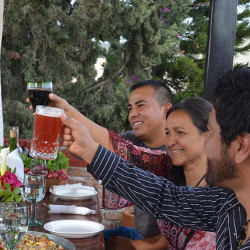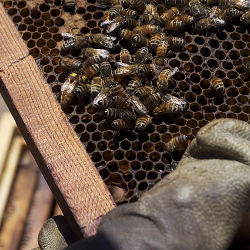“The most common way people give up their power is by thinking they don’t have any.” – Alice Walker
It’s been a discouraging few weeks. It’s been a discouraging few months and years, for that matter, as we’ve taken on one of the most powerful, most corrupt corporations in the world—Monsanto—in the battle for GMO labeling.
It’s tempting to give in to the notion that the battle is over, and we have lost.
Please don’t.
The fact is, despite passage of the DARK Act (still awaiting President Obama’s signature), many brands have seen their images, and their profits, diminish as a result of siding with Monsanto. Other food corporations stopped fighting back, and are now labeling their products as “produced with genetic engineering.”
You made that happen. Here’s what else you can do.
You can let food corporations know that you will never, ever, buy a product that displays a SmartLabel QR code.
You can reject any product that isn’t labeled organic or non-GMO.
You can also join with us as we launch a global education campaign (and boycott) around the massive, degenerative impact of industrial factory farms on our health, on our environment and on the welfare of animals.
While much of our energy has been focused on GMO labeling of human food products, it’s good to remember that only about 20 percent of GMOs go into our own food. The rest go into animal feed for animals imprisoned in factory farms, or to make ethanol to fuel our cars.
It’s time to think big.
The battle to bring down industrial factory farms won’t be easy. It won’t be short. And it won’t be pretty. Like Monsanto, which relies on the factory farm model to fuel its pesticide sales, the mega corporations that dominate the factory farm industry have deep pockets, and deep ties in Congress. If we want to transform the way meat and dairy products are produced, from today’s degenerate model to a regenerative one, we will have to believe in our own power.
Don’t think for a minute that you don’t have that power.
Donate to the Organic Consumers Association (tax-deductible, helps support our work on behalf of organic standards, fair trade and public education)
Donate to the Organic Consumers Fund (non-tax-deductible, but necessary for our GMO labeling legislative efforts)
Support OCA’s Regeneration International Project (tax-deductible, helps support our work on behalf of organic standards, fair trade and public education)
















